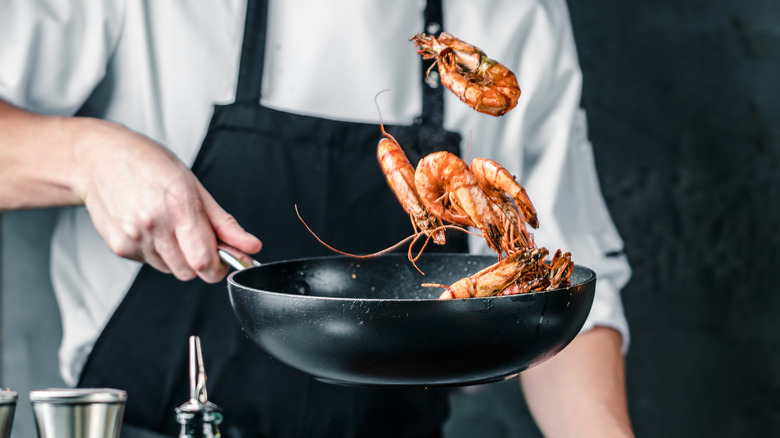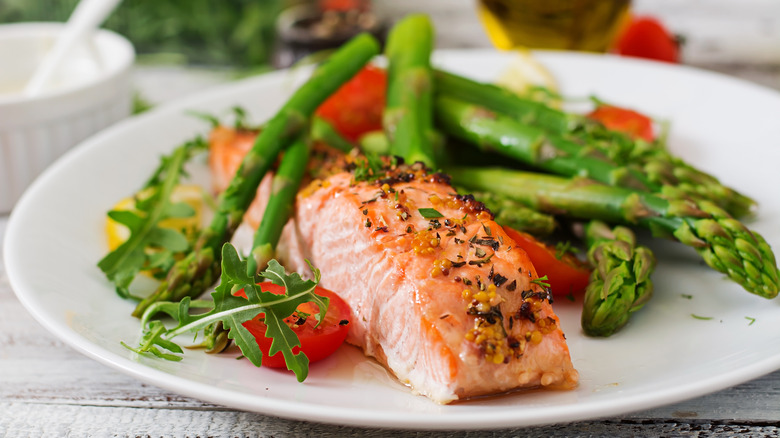The Seafood Restaurant Red Flag You Should Never Ignore
Eating fresh seafood is always a treat, and it can be even better when you're dining out. Restaurants often have access to fish and shellfish that would be harder to buy at your local supermarket — even if you knew how to prepare them. Whether the seafood comes from the ocean, bay, or nearby lake, it can give you a real taste of local flavor.
Great pleasure can come with risks, though: Seafood is one of the more likely culprits in food poisoning, and while it's a less common culprit than poultry, seafood is more vulnerable to spoilage than meat, so freshness is key when it comes to fish and shellfish (via The New York Times). Health concerns aside, fresh fish is simply much tastier and, strangely enough, smells and tastes less "fishy" (per Boston). Fresh seafood is flavorful, healthy, and tends to be on the expensive side. So when you're splurging for a fancy fish dinner, you want to make sure you can trust the place. But how can you tell if it's good before it's too late — especially if you're traveling or trying somewhere new?
There are a number of things to stay clear of at a seafood restaurant, but one of the key red flags is easy to assess: it's the size of the menu.
More is less
Chefs seem to agree that smaller restaurant menus are ideal, especially when it comes to seafood. In a Reddit thread about restaurant warning signs, one chef explained it this way: "If a restaurant has a one-page menu, that's usually a pretty good sign. It means their line cooks have become specialists and can usually nail all the dishes listed. Conversely, if a restaurant has a giant, multi-page menu, that's a gigantic red flag."
Another cook chimed in with similar thoughts. "A good restaurant, specifically finer dining, will not crutch on a large menu, but will have a consistent one – maybe a page or 2. Bigger menus usually mean that some items won't get ordered as often, and will have been likely sitting, especially if they're on the menu (i.e. lower cost)." Another commenter summed up long menus even more succinctly: "It's all frozen." Speaking to Eat This, Not That!, chef and journalist Patrick Evans-Hylton agreed. "Under most circumstances, it would be impossible for a kitchen to keep up with prepping and preparing such a huge menu," he said.
While there are other clues that can be used to assess the quality of an establishment, the menu test is one of the easiest and fastest. Plus, it comes with an additional bonus: It shouldn't take as long to decide what you're going to have to eat.

